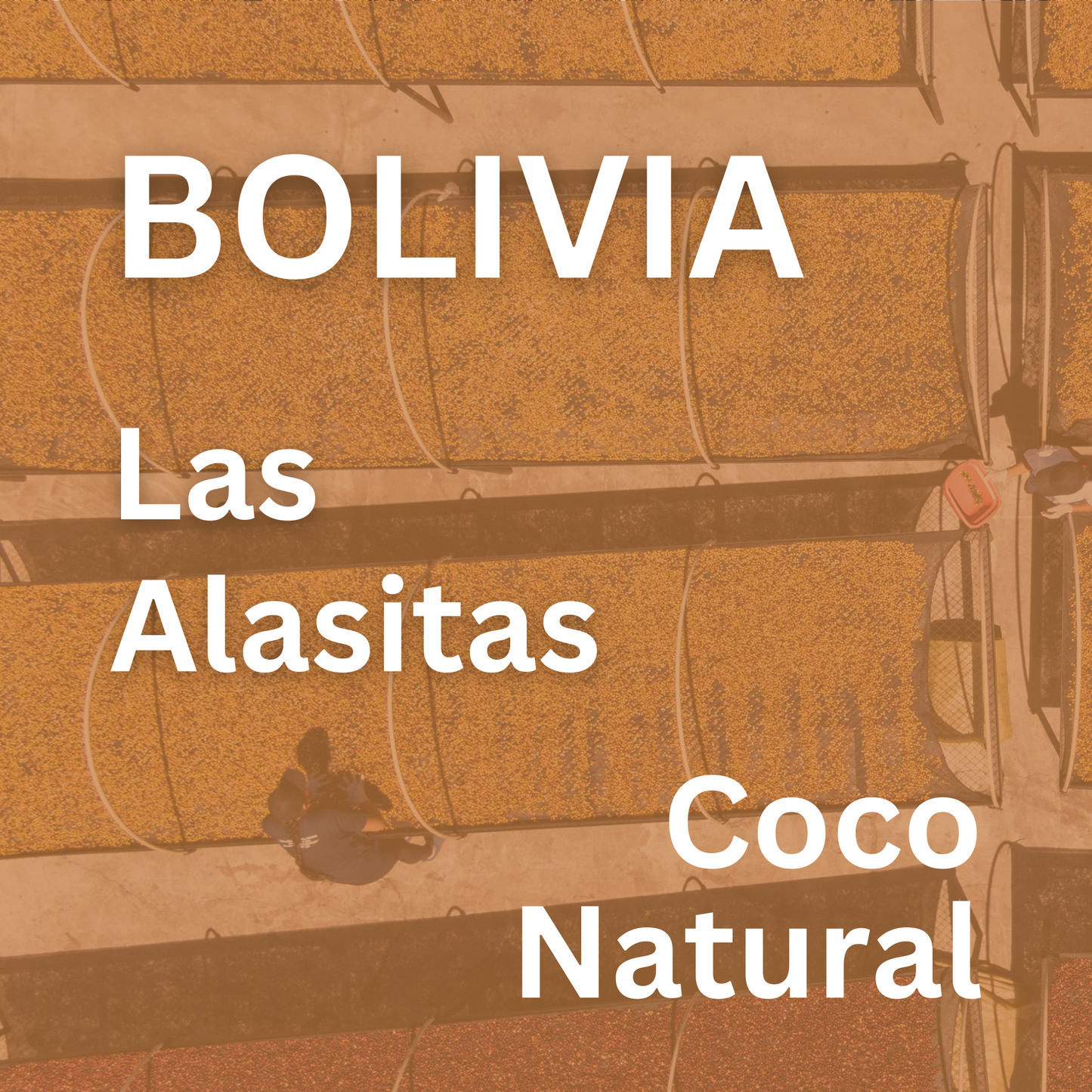NaN
/
of
-Infinity
by Pedro Rodriguez
Bolivia Las Alasitas Coco Natural
Bolivia Las Alasitas Coco Natural
Regular price
HK$205.00
Regular price
Sale price
HK$205.00
Unit price
/
per
Couldn't load pickup availability
Share
Bolivia Las Alasitas Coco Natural by Pedro Rodriguez
| region | Caranavi |
| varietal | Caturra |
| process | Coco Natural |
| altitude | 1750 masl |
| flavour | Purple Grape, Chocolate, Dried fig |
Bolivia
The Caranavi region is the most common coffee growing area in Bolivia, serving as the gateway to the Amazon rainforest. In recent years, thanks to the efforts of the Rodriguez family, they have also expanded their cultivation to the Samaipata region, offering high-quality coffee.
In the past decade, Bolivia has experienced a significant decline in coffee production, with a reduction of nearly 80% due to shifts in government policies and pest infestations. Currently, the total export volume is only around 1,200 tons. As a result, Bolivian coffee is relatively rare in the market. However, Bolivia's higher latitudes and unique microclimate conditions have given rise to a wide variety of coffee products, offering a diverse range of choices.

Bolivia Las Alasitas
by Pedro Rodriguez
The Rodriguez family has been a pioneer in Bolivia's coffee industry, starting over 30 years ago with the operation of a wet mill. However, during the period of significant coffee production decline, they made the decision to engage in coffee cultivation themselves. With a focus on modern estate management, they dedicated themselves to producing high-quality coffee. At the same time, they aimed to share their expertise and techniques with local farmers, leading to the creation of the Sol De La Manana. Together, they are revitalizing Bolivia's coffee industry, ensuring that Bolivian coffee does not fade away in the market.
Due to the emphasis on quality, there was a reduction in production.
During the pandemic, the Rodriguez Family made numerous improvements to their production chain.
The Rodriguez Family made a courageous decision to undertake a large-scale pruning of the estate's trees, allowing them to receive ample sunlight from top to bottom. Although this led to a direct reduction in yield by half, it significantly improved the growing environment for coffee plants, enabling them to absorb more nutrients and greatly enhancing the quality of the coffee.
-

Prior to the tree pruning in 2019...
-

After the tree pruning in 2022...
Utilizing scientific methods to monitor the fermentation environment...
By having scientists stationed at the processing facility in the production area, they are able to monitor the pH level and the growth of microorganisms in real-time, ensuring control over the fermentation environment. Additionally, through monitoring the cultivation of purified strains, they achieve better control and consistency in coffee fermentation and processing.











